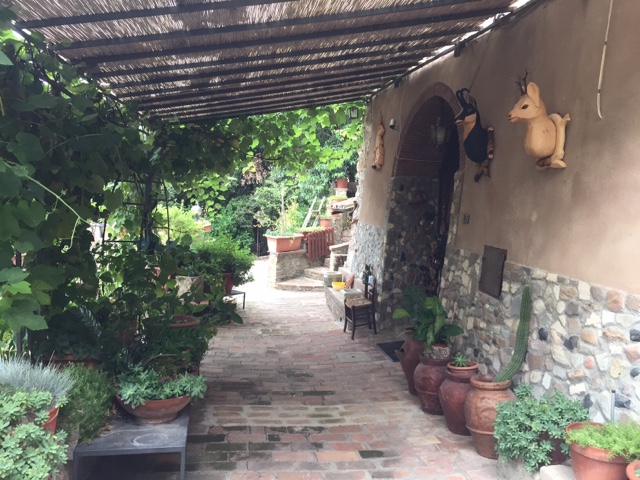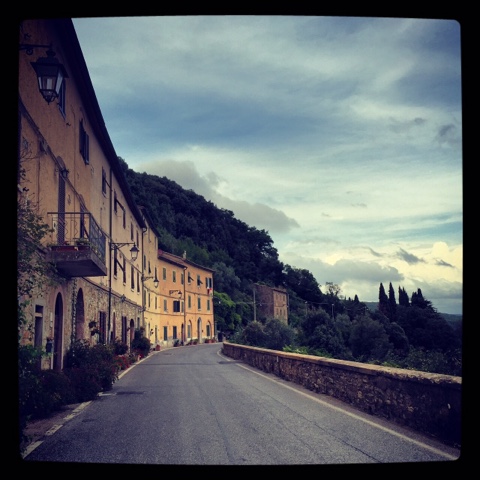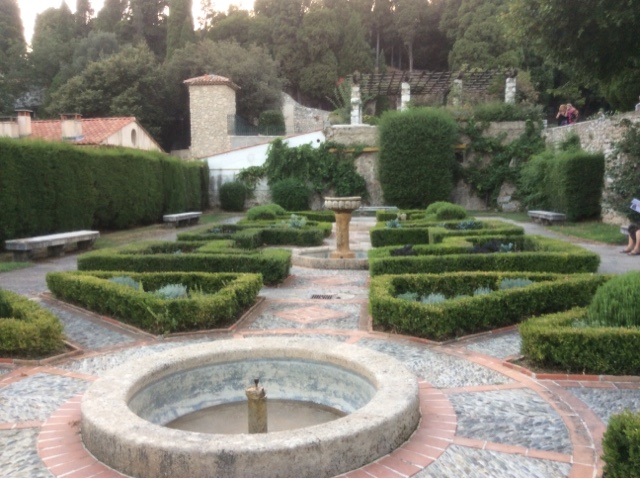Ravenna is a city that I have wanted to visit for many years, since I began studying Byzantine history. The center of the Byzantine Empire, of course, is Constantinople, which is now called Istanbul. However, when the Ottamans captured Constantinope in 1492, many of the Byzantine treasures were destroyed. (To be sure, Constantinope had been a city that had been in decline for centuries by then, at least since 1204 when the Venetians sacked the greatest city in Christendom in the name of a religious crusade against Islam in Jerusalem. (If that doesn't make sense, don't worry; most of Byzantine history, Crusader history, and the history of Christianity doesn't typically follow in a logical manner (that might apply to history in general).)
I say all that to say that Ravenna, outside of Istanbul, is the greatest city to see Byzantine history and culture. The centerpiece of the greatness Ravenna's Byzantine treasures is in the church of San Vitale.
It was built in the 6th century under the rule of the Byzantine Emperor, Justinian. This site has what are perhaps the greatest examples of Byzantine mosaic art in the world. To be sure, I had seen many of the works in photos in books, but actually coming here, and seeing them in the real context of San Vitale was breathtaking.
Every centimeter of the walls and ceilings at the front of the church are covered with mosaic stones which seem to glow with a light that fills up the room.
The three major mosaic panels are the central image of christ (without a beard) above the alter, and on the walls leading to the alter, a panel of Justinian flanked by bishops and soldiers, which faces a panel on the opposite wall of the Empress Theodora flanked by her entourage.
One interpretation of the soldiers who flank Justinian is that the one on his right hand is Belisaurius, who is the general who won back the Italian territory for the Roman Empire. (The Byzantine Empire actually is a later version of the Roman Empire, and up until the empire's demise in 1492, they continued to call themselves Romans, despite the fact that they were not in Rome, spoke Greek instead of Latin, and later rejected the Pope as a religious leader.) Belisaurius was so loyal that when he was offered by those he conquered to rule the lands he won, he refused, and instead gave those lands to Justinian to rule over. Justinian was so grateful that the empire had become the largest in landmass since the ancient Roman empire, that when someone accused Belisaurius of disloyalty, Justinian promptly had him blinded and stripped him of all his wealth, to die a beggar in the streets of Constantinople.
Other than these great treasures of early Byzantine history, Ravenna is an odd town that upon my first sight, doesn't particularly deserve much attention beyond these monuments. Perhaps when I visit again, I will try to glean more interesting things to say about the modern city, but I can't now. Instead, since I was here mainly to visit the Byzantine sights, I ran to a few other churches to see other key monuments.
Behind San Vitale is a mausoleum. The large stone coffins were fine enough, but this was the first place I had seen that tried to make a starry night an indoor reality with mosaic.
There is also another beautiful mosaic of a beardless Christ as a shepherd.
Another key sight was St. Apollinare de Nuovo. The most important mosaic panel here was one of a bearded Christ.
... along with a moasaic of the Mary with Christ the child.
There were also mosaic images of the city itself, and the ships in their port.
A bit further on was a baptistry. This was a small place, but it was quite uncrowded, and so I was able to take a seat and really stare at some of the images very closely.
Looking quickly at the beautiful mosaics, one might wonder why the artistic tradition that seemed to subscribe to such verisimilitude in the Greek and Roman times would descend to big blocky images that were more akin to bad video game graphics from the 1980s, with large digital pixels, except in stone mosaic. One reason that has been thrown around is that only with the golden mosaic stones could the artists create a glowing atmosphere that seemed to lend the church the sense that God's grace was illuminating the room.
However, if one looks a bit longer at these mosaics, they will discover something very interesting. Several of the images actually illustrate all the detailed artistic knowledge that the greatest artists in history possessed in order to make flat images appear real. While the finished mosaics themselves would never be mistaken for exact likenesses, they did still reveal intricate anatomical details, such as wrinkles in the face, muscles under the skin, and realistic poses. Another artistic skill that they reveal is that of perspective, so that a flat image still retains features of a three dimensional world. Objects in the back are a more faded color than objects in the foreground, and single point perspective lines can be seen in certain architectural scenes. Therefore, while some have argued that these mosaics paved the way for an abandonment of so much artistic ability in the medieval period, one cannot look at the artistic knowledge of these mosaics and honestly believe that these artists were the first to begin loosing such artistic knowledge.
A bit further out of the city of Ravenna proper is a different church, San Apollinare de Classe. This church, like the other San Apllinare, was quite bare on the eye level walls, but above, the walls were covered with mosaics again.
The center piece here was Saint Apollinare himself on a green field with different animals. I tried to look closely, but this mosaic seemed to lack a lot of the artistic knowledge of anatomy (the animals looked like toys) and perspective (there weren't even shadows, really). However, I can still imagine that the image above the alter must have entranced the worshipers a fifteen hundred years ago.
























































